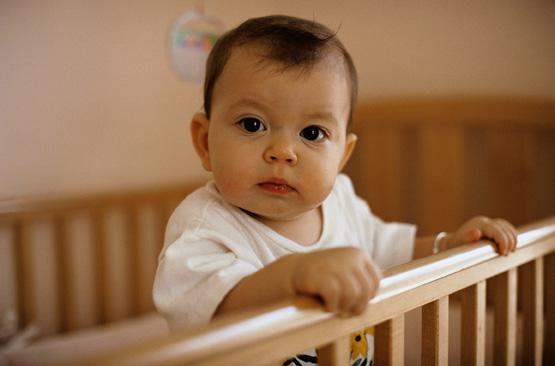Throughout the first year of your baby’s life, she will undergo so many tremendous changes it will make you wonder what you accomplished in the last 365 days. It’s important to be aware of the month-by-month developmental milestones so you can both encourage your child and be aware if there is a problem. But remember, each child progresses at his own pace. So don’t be too concerned if your baby does not smile, roll over or walk at exactly the right time. If your child is several months behind on a particular milestone, mention it to your pediatrician. Your doctor should be able to screen your baby and quickly let you know if intervention is needed.
Months One and Two
The first two months are a period of huge transition for parents. Luckily, you won’t see tremendous changes in your baby at this stage. By the end of the second month, look for the baby to be doing the following: – Make some noises other than crying – Lift head briefly – Roll a bit from side to side – Begin to coordinate eyes, though it will be weeks before the baby can track objects reliably – Begin to grasp objects, especially when fingers are pried open – Begin to smile, usually starting in her sleep – Hold head up for a few minutes while being held in a sitting position – Bat at objects – Suck on fingers – Move arms and legs more smoothly – Track objects from periphery to mid-line of his visual field
Months Three and Four
By the fourth month, you may start to see a bit of your baby’s personality emerging. Some babies at this age will smile frequently, while others reserve their grins for their parents and other special relatives. By the end of the fourth month, look for your baby to be doing the following: – Lift head to 90 degrees while on her stomach – Bring hands together – Wave objects – Move arms and legs purposely and in sync – Verbalize more frequently and with increasing variety – Begin to sleep for longer periods of time, sometimes even for 6 hours at a time – Move head from side to side to follow an object – Produce increased and varied facial expressions – Sit with support – Roll over – Pull objects to the mouth – Begin to react differently to different people, including immediate family members
Months Five and Six
Many babies start to laugh during the fifth or six month of life. Enjoy those giggles and be sure to document them via video. By the end of the sixth month, look for your baby to be doing the following: – Raise head to 90 degrees while lying on stomach – Blow raspberries or make a razzing noise with lips – Grasp a rattle – Laugh – Make consonant combinations when vocalizing – Support some weight on legs when standing – Sit without support – When pulled up from sitting, keep head level with the body – Turn head in the direction of a loud noise or voice – Demonstrate readiness of solid foods
Months Seven and Eight
At this age, there is a wide range in normal developmental abilities. Some babies may start focusing on movement, while others will focus on developing verbal skills. Accept your baby’s personal style and talk to your pediatrician if you have concerns. By the end of the eighth month, look for baby to be doing the following: – Hold a cracker and be able to feed self – Babble – Work, through creeping, rolling or crawling, to get a toy – Cry or react negatively if you take a favorite toy away – Search to find an object that was dropped – Rake an object into the body using fist – Combine consonants and vowels when babbling – Pass toy or object between hands – Transition from stomach to sitting position
Months Nine and Ten
Your baby may be starting to resemble a toddler these days. Children who have advanced gross motor skill development may start walking during these months, while children with advanced verbal skills may utter their first words. But these milestones, on average, are not seen until after a baby’s first birthday. By the end of the tenth month, look for your baby to be doing the following: – Crawl or move in some way, such as rolling or creeping – Support own weight while holding on to a person or object – Say the words "Mama" and "Dada" without referring to the specific person – Pull up to standing when seated near an object or person – Use thumb and forefinger to pick up an object, like a Cheerio – Wave bye-bye or hello
Months Eleven and Twelve
As your baby nears his first birthday, he will be blossoming into a toddler. You’ll see more personality and interaction than ever before. By the end of the twelfth month, look for your baby to be doing the following: – Clap hands – Stand without support for a few seconds – Say the words "Mama" and "Dada" when referring to the appropriate person – Use a cup – Say one other word besides parents’ names – Some babies may start walking, but this milestone is not typically reached until babies are 13 to 14 months old.





